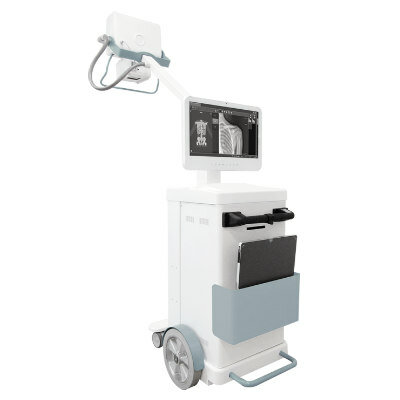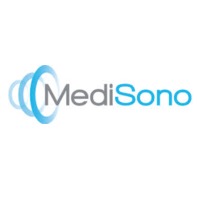New Software Simplifies Cardiac MRI Workflow
|
By MedImaging International staff writers Posted on 28 Dec 2015 |

Image: ViosWorks color representation of direction and velocity of cardiac blood flow (Photo courtesy of GE Healthcare).
An advanced application that captures seven dimensions of data (three in space, one in time, and three in vectorial) could greatly simplify cardiac magnetic resonance imaging (MRI).
The GE Healthcare ViosWorks software was designed to simultaneously provide key elements of a cardiac MRI exam, including anatomy, function and flow, thus helping to solve several cardiac MRI challenges at once. The delivery of three-dimensional (3D) spatial- and velocity-encoded dataset at every time point during the cardiac cycle allows the software to yield high resolution, time-resolved images of the beating heart, thus supplying a measure of the speed and direction of blood flow at each location.
The exam is simplified for the patient by using a free-breathing scan that can be acquired in less than 10 minutes, compared to a conventional cardiac MRI that takes over an hour to complete, helping to reduce the error-prone and time-consuming aspect of slice positioning. This is achieved due to the fact that co-registered anatomic images can be used to assess cardiac functioning and contextualize flow abnormalities. ViosWorks is a product of GE Healthcare (GE; Little Chalfont, United Kingdom), and is designed for use on the Signa Pioneer 3.0T, Signa Explorer, and Signa Creator 1.5T MRI scanners.
A key element of ViosWorks is the Arterys (San Francisco, CA, USA) cloud-based medical imaging, machine learning platform that is designed to deliver ultra-fast visualization and quantification with automatic analysis. Arterys uses software as a service (SaaS) analytics powered by powerful algorithms that allow the large datasets to be evaluated in real time, via cloud-based software that significantly reduces the time spent on data processing, and helps promote new visualization routines.
“We are excited to collaborate with Arterys and introduce this innovative cardiac MR solution that can capture seven-dimensional viewing capabilities of the heart,” said Ioannis Panagiotelis, chief marketing officer of Global MR at GE Healthcare. “With cardiovascular disease as the leading cause of death in the world, we believe that this cloud-enabled technology will help us to provide value not only for clinicians by delivering advanced visualization and quantification of cardiovascular function, but also help simplify cardiovascular examinations and address significant patient needs in cardiovascular disease.”
“We are extremely pleased to announce our partnership with GE Healthcare in conjunction with the launch of our first cardiac care solution, the first self-learning system of its kind to visualize and quantify blood flow leveraging a standard MRI machine,” said Fabien Beckers, PhD, founder and CEO of Arterys. “This pivotal milestone for the company is directly in line with our vision to transform medical imaging by bringing automatic quantitative data and deep learning to healthcare applications through a GPU smart cloud platform that can be applied to many areas of medical imaging including neurology and oncology.”
GE Healthcare hopes that the new, simplified process will help it gain ground in the US market, where it currently only makes up about one percent of MRI exams, due to the time and complexity needed.
Related Links:
GE Healthcare
Arterys
The GE Healthcare ViosWorks software was designed to simultaneously provide key elements of a cardiac MRI exam, including anatomy, function and flow, thus helping to solve several cardiac MRI challenges at once. The delivery of three-dimensional (3D) spatial- and velocity-encoded dataset at every time point during the cardiac cycle allows the software to yield high resolution, time-resolved images of the beating heart, thus supplying a measure of the speed and direction of blood flow at each location.
The exam is simplified for the patient by using a free-breathing scan that can be acquired in less than 10 minutes, compared to a conventional cardiac MRI that takes over an hour to complete, helping to reduce the error-prone and time-consuming aspect of slice positioning. This is achieved due to the fact that co-registered anatomic images can be used to assess cardiac functioning and contextualize flow abnormalities. ViosWorks is a product of GE Healthcare (GE; Little Chalfont, United Kingdom), and is designed for use on the Signa Pioneer 3.0T, Signa Explorer, and Signa Creator 1.5T MRI scanners.
A key element of ViosWorks is the Arterys (San Francisco, CA, USA) cloud-based medical imaging, machine learning platform that is designed to deliver ultra-fast visualization and quantification with automatic analysis. Arterys uses software as a service (SaaS) analytics powered by powerful algorithms that allow the large datasets to be evaluated in real time, via cloud-based software that significantly reduces the time spent on data processing, and helps promote new visualization routines.
“We are excited to collaborate with Arterys and introduce this innovative cardiac MR solution that can capture seven-dimensional viewing capabilities of the heart,” said Ioannis Panagiotelis, chief marketing officer of Global MR at GE Healthcare. “With cardiovascular disease as the leading cause of death in the world, we believe that this cloud-enabled technology will help us to provide value not only for clinicians by delivering advanced visualization and quantification of cardiovascular function, but also help simplify cardiovascular examinations and address significant patient needs in cardiovascular disease.”
“We are extremely pleased to announce our partnership with GE Healthcare in conjunction with the launch of our first cardiac care solution, the first self-learning system of its kind to visualize and quantify blood flow leveraging a standard MRI machine,” said Fabien Beckers, PhD, founder and CEO of Arterys. “This pivotal milestone for the company is directly in line with our vision to transform medical imaging by bringing automatic quantitative data and deep learning to healthcare applications through a GPU smart cloud platform that can be applied to many areas of medical imaging including neurology and oncology.”
GE Healthcare hopes that the new, simplified process will help it gain ground in the US market, where it currently only makes up about one percent of MRI exams, due to the time and complexity needed.
Related Links:
GE Healthcare
Arterys
Latest Imaging IT News
- New Google Cloud Medical Imaging Suite Makes Imaging Healthcare Data More Accessible
- Global AI in Medical Diagnostics Market to Be Driven by Demand for Image Recognition in Radiology
- AI-Based Mammography Triage Software Helps Dramatically Improve Interpretation Process
- Artificial Intelligence (AI) Program Accurately Predicts Lung Cancer Risk from CT Images
- Image Management Platform Streamlines Treatment Plans
- AI-Based Technology for Ultrasound Image Analysis Receives FDA Approval
- AI Technology for Detecting Breast Cancer Receives CE Mark Approval
- Digital Pathology Software Improves Workflow Efficiency
- Patient-Centric Portal Facilitates Direct Imaging Access
- New Workstation Supports Customer-Driven Imaging Workflow
Channels
Radiography
view channel
Novel Breast Imaging System Proves As Effective As Mammography
Breast cancer remains the most frequently diagnosed cancer among women. It is projected that one in eight women will be diagnosed with breast cancer during her lifetime, and one in 42 women who turn 50... Read more
AI Assistance Improves Breast-Cancer Screening by Reducing False Positives
Radiologists typically detect one case of cancer for every 200 mammograms reviewed. However, these evaluations often result in false positives, leading to unnecessary patient recalls for additional testing,... Read moreUltrasound
view channel
Deep Learning Advances Super-Resolution Ultrasound Imaging
Ultrasound localization microscopy (ULM) is an advanced imaging technique that offers high-resolution visualization of microvascular structures. It employs microbubbles, FDA-approved contrast agents, injected... Read more
Novel Ultrasound-Launched Targeted Nanoparticle Eliminates Biofilm and Bacterial Infection
Biofilms, formed by bacteria aggregating into dense communities for protection against harsh environmental conditions, are a significant contributor to various infectious diseases. Biofilms frequently... Read moreNuclear Medicine
view channel
New SPECT/CT Technique Could Change Imaging Practices and Increase Patient Access
The development of lead-212 (212Pb)-PSMA–based targeted alpha therapy (TAT) is garnering significant interest in treating patients with metastatic castration-resistant prostate cancer. The imaging of 212Pb,... Read moreNew Radiotheranostic System Detects and Treats Ovarian Cancer Noninvasively
Ovarian cancer is the most lethal gynecological cancer, with less than a 30% five-year survival rate for those diagnosed in late stages. Despite surgery and platinum-based chemotherapy being the standard... Read more
AI System Automatically and Reliably Detects Cardiac Amyloidosis Using Scintigraphy Imaging
Cardiac amyloidosis, a condition characterized by the buildup of abnormal protein deposits (amyloids) in the heart muscle, severely affects heart function and can lead to heart failure or death without... Read moreGeneral/Advanced Imaging
view channel
New AI Method Captures Uncertainty in Medical Images
In the field of biomedicine, segmentation is the process of annotating pixels from an important structure in medical images, such as organs or cells. Artificial Intelligence (AI) models are utilized to... Read more.jpg)
CT Coronary Angiography Reduces Need for Invasive Tests to Diagnose Coronary Artery Disease
Coronary artery disease (CAD), one of the leading causes of death worldwide, involves the narrowing of coronary arteries due to atherosclerosis, resulting in insufficient blood flow to the heart muscle.... Read more
Novel Blood Test Could Reduce Need for PET Imaging of Patients with Alzheimer’s
Alzheimer's disease (AD), a condition marked by cognitive decline and the presence of beta-amyloid (Aβ) plaques and neurofibrillary tangles in the brain, poses diagnostic challenges. Amyloid positron emission... Read more.jpg)
CT-Based Deep Learning Algorithm Accurately Differentiates Benign From Malignant Vertebral Fractures
The rise in the aging population is expected to result in a corresponding increase in the prevalence of vertebral fractures which can cause back pain or neurologic compromise, leading to impaired function... Read moreImaging IT
view channel
New Google Cloud Medical Imaging Suite Makes Imaging Healthcare Data More Accessible
Medical imaging is a critical tool used to diagnose patients, and there are billions of medical images scanned globally each year. Imaging data accounts for about 90% of all healthcare data1 and, until... Read more
Global AI in Medical Diagnostics Market to Be Driven by Demand for Image Recognition in Radiology
The global artificial intelligence (AI) in medical diagnostics market is expanding with early disease detection being one of its key applications and image recognition becoming a compelling consumer proposition... Read moreIndustry News
view channel
Bayer and Google Partner on New AI Product for Radiologists
Medical imaging data comprises around 90% of all healthcare data, and it is a highly complex and rich clinical data modality and serves as a vital tool for diagnosing patients. Each year, billions of medical... Read more




















